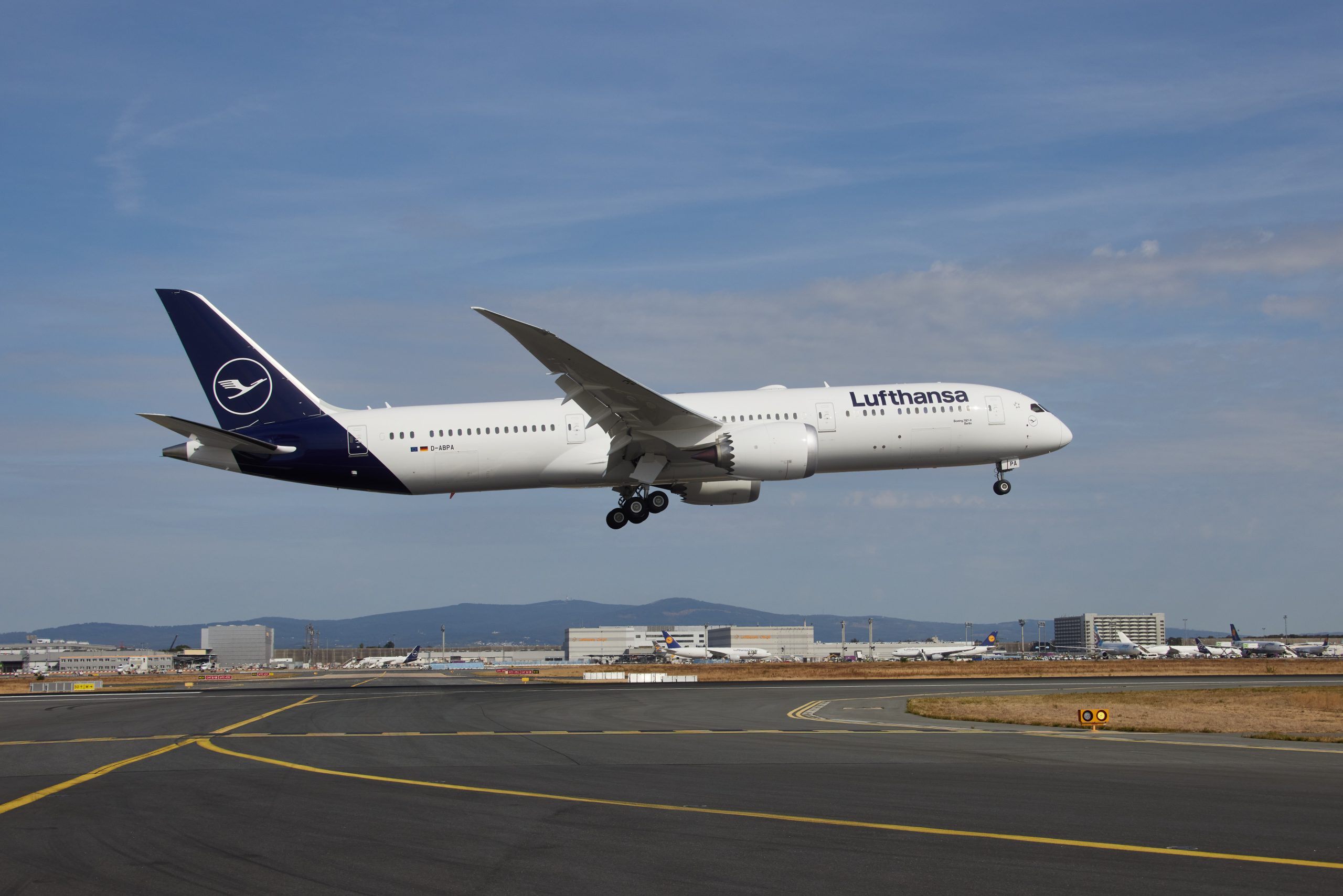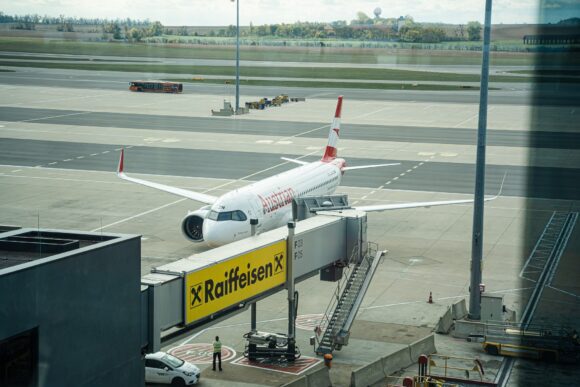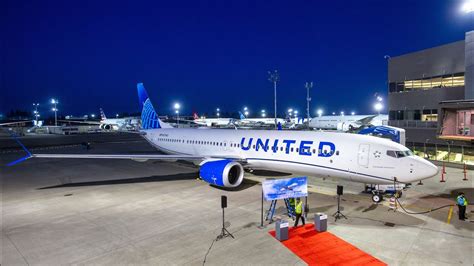
220830 787 ABPA 007
It’s not completely there yet, but Lufthansa Group is getting pretty close already to 2019 operating and profit levels. The airline group reported Q3 revenues and an operating result today that was almost identical to Q3 2019, confirming the recovery trend since Q2. Lufthansa’s Q3 results almost on par with those of 2019.
Lufthansa Group reported a consolidated Q3 net profit of €809 million compared to a €-72 million loss for the same period in 2021. The operating result or Adjusted EBIT was €1.132 billion versus €251 million. Total revenues reached €10.068 billion, up from €5.207 billion. Yields were 23 percent up from 2019. Adjusted free cash flow was €410 million. Compare this to Q3 2019: net profit €1.154 billion, Adjusted EBIT €1.297 billion, revenues at €10.177 billion, and Adjusted free cash flow of €416 million, and the picture is evident. This looks very much like 2019 again, with all business segments contributing strongly to the results.
Lufthansa Group carried 33 million passengers in Q3. Short-haul capacity was at ninety percent, long-haul at seventy percent of 2019 levels, with the transatlantic the best-performing market. Load factors in Premium cabins in First Class and Business Class already outpace those in 2019, while Economy Class is at 80 percent of pre-pandemic levels. This also confirms the trend that Lufthansa customers prefer to book Premium seats. This should only increase with the introduction of the new Allegris premium cabins in 2023.
Over the nine-month period, the German/Swiss/Austrian/Belgium/Italian airline group is not at 2019 levels yet. The net profit was €484 million, up from a €-1.877 billion loss in 2021. Adjusted EBIT was €934 million versus €-1.624 billion, and total revenues €23.893 billion versus €10.978 billion. In 2019, the numbers were a €1.038 billion net profit, Adjusted EBIT of €1.715 billion, and revenues of €27.7 billion.
By airline
Parent airline Lufthansa produced an Adjusted EBIT in Q3 of €224 million, up from €-320 million last year. The nine-month Adjusted EBIT was still negative at €-574 million, although an improvement over €-1.873 billion last year. Revenues tripled to €9.411 billion from €3.094 billion for the 9M periods. The results include the costs of the pilot strike this summer.
SWISS performed even better than Lufthansa, producing a €234 million Adjusted EBIT compared to €5 million in Q3 2021. The airline recorded very strong demand in Switzerland while benefitting from the previously completed cost reductions. The 9M Adjusted EBIT is €279 million versus €-378 million, and revenues at €3.467 billion versus €1.330 billion, the result of increased flight operations. SWISS is expecting a solid full-year operating profit based on continued high bookings.
Austrian produced its best quarter in over twenty years. The airline has just introduced its first Airbus A320neo. (Austrian Airlines)
Austrian Airlines returned to a solid profit and reported an Adjusted EBIT of €110 million, which compares strongly against just €2 million in Q3 last year. It is the strongest quarterly result in over twenty years and comes after various loss-making quarters since the pandemic. The cost structure of the carrier has improved significantly, which has helped it to improve margins. The 9M result is €4 million versus €-196 million, with revenues at €1.366 billion, up from €491 million. The results also reflect higher operating volumes.
Brussels Airlines produced a Q3 Adjusted EBIT of €52 million, up from €2 million in 2021. As at Austrian, this is the highest quarterly result in twenty years. For January-September, this is still negative at €-37 million but a huge improvement from €-141 million last year, with revenues at €888 million from €380 million. The carrier is seeing the effects of its Reboot Plus restructuring program, but like Lufthansa, the Belgium subsidiary was confronted with a strike this summer to protest the high workload. For two weeks, the airline and social partners are jointly working to solve the issues. The carrier has launched a recruitment campaign that so far has resulted in the hiring of 300 new staff. For the full year, Brussels Airlines will not reach break-even yet but expects to be profitable in 2023.
The results of leisure airline Eurowings are about static, with a Q3 Adjusted EBIT of €103 million versus €108 million last year. The 9M result shows €-136 million compared to €-143 million, with revenues at €1.427 billion versus €530 million. The airline suffered proportionally more from the need to wet-lease extra capacity and the recruitment of new staff as it expanded its operations.
Cargo
Lufthansa Cargo continued its strong performance, contributing with a Q3 Adjusted EBIT of €331 million compared to €302 million last year. The 9M result is €1.308 billion versus €943 million, with revenues at €3.567 billion versus €2.542 billion. The business unit benefits from the continued lower worldwide capacity that still sees belly capacity lower on long-haul passenger flights, which boosted yields. As some belly capacity came back, total capacity was up by twenty percent. Revenue cargo-tonne kilometers were 5.363 million for January-September, slightly up from 5.234 million in 2021. Lufthansa Cargo added medium-haul capacity to its fleet by inducting a second Airbus A321P2F. It extended the lease on two Boeing 777Fs for seven years from 2024 to 2031 and ordered three 777Fs and seven 777-8Fs for growth and fleet renewal.
Also doing well was Lufthansa Technik, which produced an Adjusted EBIT for Q3 of €177 million versus €149 million or €397 million versus €284 million in 9M. This reflects the recovery of air travel, which requires more maintenance checks of aircraft and equipment. Catering subsidiary LSG saw a strong recovery in North and Latin America, but Asia is still weak. This translates into an Adjusted EBIT in Q3 of €6 million versus €35 last year and €-7 million in January-September versus €54 million, with revenues at €1.415 billion from €766 million.
Repaying state aid
Chief Financial Officer Remco Steenbergen was very pleased with the Q3 results, especially the positive Adjusted free cash flow. Lufthansa Group also reduced its net debt by €2.8 billion to €6.2 billion. Austrian Airlines will repay the final €210 million of the €300 million in total state said before the end of this year, three years ahead of plan. Brussels Airlines will repay the loan of €290 million it received from the Belgian government. Once completed, all Lufthansa subsidiary airlines have now fully repaid the state aid they received during the Covid-crisis in 2020. By the end of September, liquidity stood at €11.8 billion, up from €9.4 billion in September. Lufthansa has no immediate need to refinance loans.
Fuel costs of €2.5 billion in Q3 pushed up the total expenses, which were up eighty percent to €24.6 billion in January-September. Although fuel prices have dropped, Lufthansa continues to hedge. Crude oil is hedged 64 percent for Q4 and fifty percent for 2023, while jet fuel is hedged 38 percent in Q4 and 32 percent next year. Hedging will save some €1.0 billion on the total fuel bill, which is expected to close at €7.6 billion for the full year. The group is hedged 76 percent in Q4 against the US dollar and 37 percent in 2023.
In our HY1 report in August, we mentioned that Lufthansa had some work to do to restore its relationship with unions. The airline group was confronted with multiple strikes with ground staff, cabin crew, and pilots during the spring and summer periods. The four days of strike at Eurowings this month, in which pilots demanded more days off, has cost €10 million a day. Strikes have cost Lufthansa in total €70 million.
But things have changed: Lufthansa has an interim agreement with its pilots and a full agreement for ground staff at the mainline carrier and Lufthansa CityLine. It is close to an agreement with the cabin crew union. SWISS also has agreements in place with pilots (concluded this week) and ground staff, as has Austrian which also includes cabin crew. Following the pilot strike at Eurowings, the situation is still tense after airline management announced that it is forced to reduce the German fleet by five aircraft next year to curb costs.
Spohr’s three priorities
In its outlook, Lufthansa expects to end 2022 with an Adjusted EBIT of over €1.0 billion and Adjusted free cash flow of €2.0 billion. Capacity will grow to eighty percent in Q4, which should see an operating profit despite the seasonal slump in traffic. The average capacity of 2022 will be 75 percent, in line with the guidance in August. With a further recovery expected in 2023, the group is on track to produce an Adjusted EBIT margin of at least eight percent in 2024 and a return on capital employed of at least ten percent.
CEO Carsten Spohr said Lufthansa’s focus for the coming months will be on product, people, and profitability. On the product, this means the introduction of the new Allegris cabins and the Boeing 787-9s, of which the first will enter long-haul service with Lufthansa later this month. SWISS, Austrian, and Brussels Airlines will also receive product updates and new aircraft, with Austrian having introduced its first Airbus A320neo last week. Next summer, Lufthansa will bring back three Airbus A380s from deep storage to meet demand, but Spohr said this might become more for operational reasons. Product improvements also include contact with customers by investing in its contact centers.
The focus on people is on stabilizing the relationship with unions and workforce representatives, which already has resulted in the conclusion of ten new labor contracts. Spohr said that reaching new partnerships is not easy, but the new contracts show that progress is made. Lufthansa is hiring again in IT, cockpits, and cabins to bring the total workforce to 115.000 by the end of December. This compares to 108.000 in September but is well below 138.000 in December 2019.
Profitability is the third focus, but supply chain issues and labor shortages will have an impact for some years to come. This situation is prompting the airline industry to diversify its supply chain to make it less dependent on a single supplier. The effects of the Covid-crisis aren’t over either, notably in China and Asia. But if this summer has shown one thing, says Spohr, demand is very strong as people just want to travel again.
And Lufthansa diversified its customer base since 2019, “serving three out of four tickets to customers outside our home market Germany. Revenues in the US are up fifteen percent compared to 2019, which is more remarkable, given that transatlantic capacity is still twenty percent below pre-crisis levels.”
Views: 4





